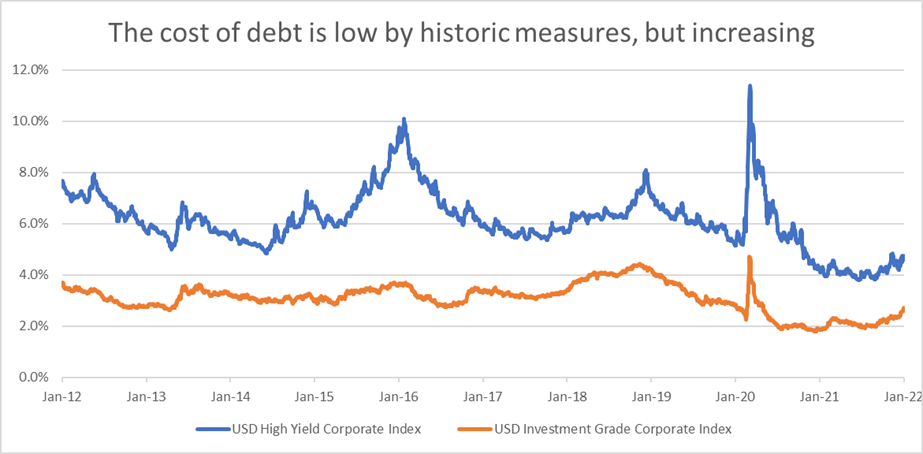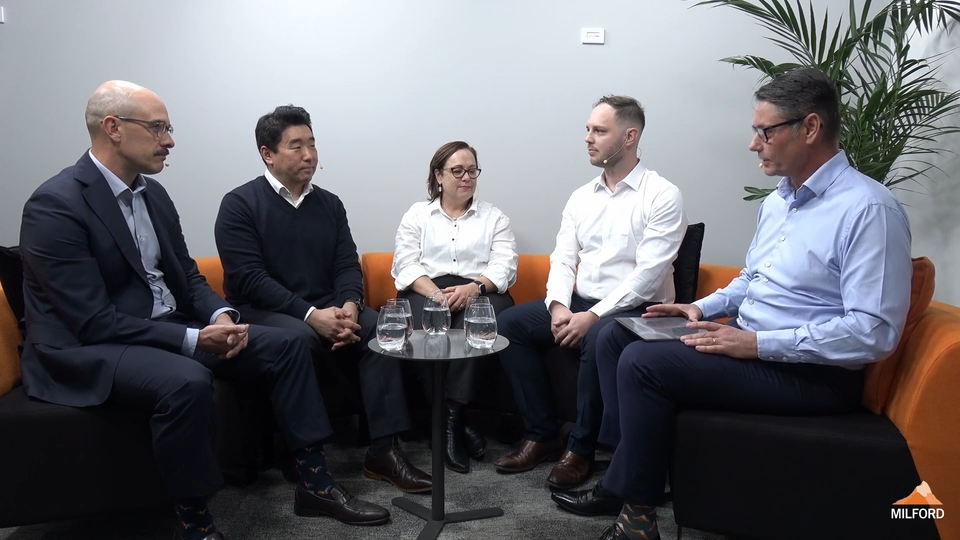Last year I wrote a short blog on elevated cash balances at many global companies and the considerations for investors as the economic recovery unfolded and these companies began spending this cash. Nearly a year on, allocation of ‘excess cash’ has indeed shifted away from credit improvement and towards more discretionary spend, with mergers & acquisitions (“M&A”) in particular capturing recent headlines. Such trends are typically less beneficial for debt investors who need to remain close to the spending priorities of their investments to avoid adverse events and take advantage of positive catalysts.
Where are we now?
Research suggests cash balances of US investment grade companies remains elevated. At the same time a recovery in earnings has seen US and European credit quality as measured by leverage* improve to be either at, or fast approaching, pre-Covid levels. Moreover, management teams continue to gain confidence in a path through the pandemic.
The implication is that rather than applying cash to further improving balance sheets, companies are increasingly expected to favour spending ‘excess cash’ (or “capital allocation”) on more discretionary areas such as growth capital (“capex” e.g. new equipment), shareholder returns (share buybacks and/or higher dividends) and M&A. This spend typically favours shareholders over debt investors.
In addition, the cost of debt still remains low by historic standards, even after the recent rise in market interest rates. This, alongside current high consumer price inflation and expectations for even higher interest rates may encourage companies to bring forward spending intentions and even increase debt further when they can.

Source: Bloomberg
Increasing M&A
In the US, the Federal Trade Commission (antitrust regulatory body) noted a record $5.8tn M&A in 2021, over two times the five-year average. This theme looks set to continue, with 2022 already seeing Microsoft announce the acquisition of gaming company Activision Blizzard for ~USD70bn (subject to regulatory approval), and consumer goods giant Unilever announce it had made (so far) unsuccessful bids of up to GBP50bn for GlaxoSmithKline’s consumer healthcare business.
Notwithstanding high cash balances, the largescale M&A we are seeing, combined with relatively low borrowing costs are encouraging acquisitions to be predominantly funded with debt. This can have a negative impact on debt investors in that company who i) typically see a deterioration in credit quality due to higher levels of debt ahead of anticipated earnings growth, and ii) see a supply of new bonds issued to fund the acquisition (new bonds can come at a discount relative to existing bonds to entice investment, negatively impacting the price of existing bonds).
Last year I used the example of software company Oracle which, at the expense of its credit ratings, had raised debt primarily to fund buying back its own shares. In Dec-21 Oracle continued this theme, announcing the ~USD28bn cash and debt funded acquisition of healthcare software company, Cerner. Rating agencies have placed Oracle’s credit ratings on a ‘negative outlook’ as its credit quality looks to continue to deteriorate. Since the start of 2020 Oracle has fallen from a Standard and Poor’s rating of ‘A+’ to ‘BBB+’ and likely lower upon completion of the Cerner acquisition. Unsurprisingly, Oracle’s bonds have underperformed peers.
A heightened transactional environment is, however, not all negative for debt investors. Debt investors can seek to identify companies with intentions to improve their credit profiles either by equity funded M&A or taking advantage of a buoyant market to divest of parts of their business.
The Milford Equity and Fixed Interest teams are invested in farm equipment manufacturer CNH International which recently separated its trucks and bus division into the newly listed Iveco business and saw a credit rating upgrade from Fitch. The Fixed Interest team is also invested in US telecommunications company AT&T which has agreed to sell its Warner Media business (subject to regulatory approvals) and use the proceeds to improve its credit profile.
What does this mean for investors?
Capital allocation is expected to continue to migrate towards capex, shareholder returns and M&A. Implications from this spend is case-by-case, but it is increasingly important for debt investors to know the capital allocation intentions of their investments and remain active in managing their portfolios to help position to benefit from some of these trends as well as avoid pitfalls of others.
*debt divided by earnings


